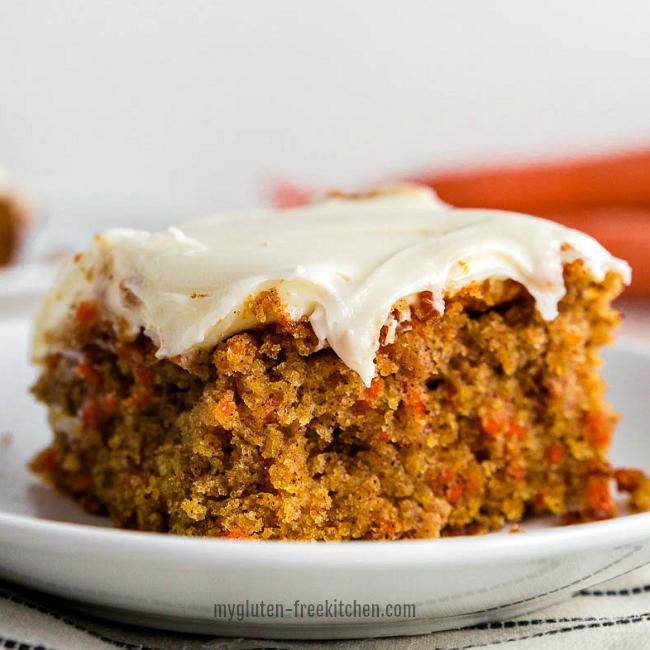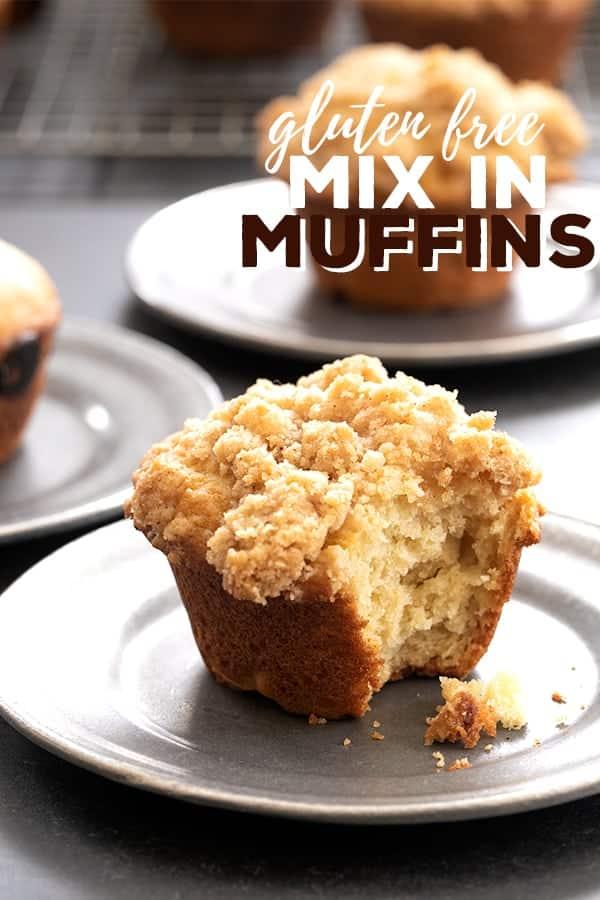In the world of baking, the humble blend of flour, sugar, and butter has long been celebrated for its comforting familiarity. Yet, for those navigating gluten sensitivities or simply exploring new culinary horizons, traditional recipes can feel like closed doors. Enter gluten-free baking-a realm where creativity meets careful ingredient choices, transforming muffins, cakes, and cookies into delicious treats that everyone can enjoy. This article delves into the art and science of gluten-free baking, offering insights and inspiration to help you craft delightful desserts without compromise. Whether you’re a seasoned baker or a curious beginner, the journey to perfect gluten-free goodies promises both challenge and reward.
Understanding Gluten-Free Ingredients for Perfect Texture
When crafting gluten-free treats, the choice of ingredients is pivotal in achieving that coveted tender crumb and satisfying bite. Unlike traditional wheat flour, gluten-free flours lack the natural elasticity that gluten provides, so bakers must rely on a clever combination of alternative flours, starches, and binding agents to mimic the texture we all love.
Almond flour and coconut flour bring moisture and richness, but their dense nature means they should be balanced with lighter options like rice flour or tapioca starch. Starches are the unsung heroes, lending softness and a slight chew, crucial for cakes and muffins. Meanwhile, xanthan gum or guar gum acts as the structural glue, lending elasticity and preventing crumbliness.
- Brown rice flour: Adds a mild, nutty flavor and good structure
- Tapioca starch: Enhances chewiness and crisp edges
- Potato starch: Provides lightness and softness
- Ground flaxseed: Natural binder and moisture enhancer
| Ingredient | Role in Baking | Effect on Texture |
|---|---|---|
| Almond Flour | Moisture & richness | Dense, tender crumb |
| Rice Flour | Bulk & structure | Light, slightly grainy |
| Tapioca Starch | Binding & chewiness | Soft, springy |
| Xanthan Gum | Elasticity & structure | Prevents crumbling |
Mastering the balance of these ingredients allows you to create muffins that spring back, cakes that slice cleanly, and cookies that hold together without feeling heavy. Experimentation is key – don’t be afraid to tweak ratios until you hit that perfect harmony of texture and taste.
Mastering Muffins That Rise and Moisturize Without Gluten
Gluten-free muffins often struggle with achieving that perfect rise and tender crumb due to the absence of gluten’s natural elasticity. However, the secret lies in balancing alternative flours with the right leavening agents and moisture-retaining ingredients. Start by incorporating a blend of almond flour, tapioca starch, and oat flour – this trio mimics the structure gluten provides, ensuring a fluffy texture. Don’t underestimate the power of eggs or flaxseed meal as binding agents; they not only hold your muffins together but also contribute to a light, airy rise.
Hydration is key when working without gluten. Adding ingredients like Greek yogurt, applesauce, or mashed bananas introduces moisture and enhances softness, preventing that dry, crumbly outcome often associated with gluten-free baking. Additionally, a splash of apple cider vinegar or lemon juice activates baking soda, boosting lift and creating tiny air pockets that result in a springy muffin.
- Use a combination of gluten-free flours for balanced texture
- Incorporate moisture-rich ingredients to keep muffins tender
- Leverage acidic components to maximize rise
- Don’t skip the binding agents; they replicate gluten’s role
| Ingredient | Role | Recommended Amount |
|---|---|---|
| Almond Flour | Structure & Moisture | 1 cup |
| Tapioca Starch | Lightness & Chew | ½ cup |
| Baking Soda + Vinegar | Leavening | 1 tsp + 1 tbsp |
| Greek Yogurt | Moisture & Tenderness | ½ cup |
Creating Decadent Gluten-Free Cakes with Flavor and Flair
When it comes to gluten-free cakes, achieving that perfect balance of moistness and crumb can feel like a delicate art. The secret lies not just in the choice of flours, but in layering flavors and textures that make each bite an indulgent experience. Almond flour, coconut flour, and even oat flour can be combined to create a tender base, while natural sweeteners like honey or maple syrup add depth without overpowering the palate.
Enhancing flavor profiles is where you can truly let your creativity shine. Incorporate ingredients such as vanilla bean paste, ground cardamom, or finely grated citrus zest to elevate the cake’s complexity. Don’t shy away from adding mix-ins like toasted nuts, dark chocolate chunks, or dried fruit to introduce delightful contrasts in every slice.
For those who appreciate the visual appeal as much as taste, decorating gluten-free cakes offers endless possibilities. From smooth, velvety frostings made with coconut cream to vibrant fresh fruit toppings, presentation can amplify the cake’s allure. Try these simple tips to bring flair to your creations:
- Use a palette knife to create rustic, textured frosting finishes.
- Sprinkle edible flowers or crushed pistachios for a touch of elegance.
- Drizzle with dark chocolate ganache for a glossy, dramatic effect.
| Flour Type | Flavor Notes | Best Use |
|---|---|---|
| Almond Flour | Nutty, rich | Moist cakes, dense crumb |
| Coconut Flour | Sweet, mild coconut | Light cakes, absorbs moisture |
| Oat Flour | Earthy, subtle sweetness | Fluffy texture, mild flavor |
Baking Cookies That Balance Crispness and Chewiness Naturally
Achieving the perfect harmony between crisp edges and a chewy center in gluten-free cookies is an art form that begins with selecting the right combination of flours. Almond flour and tapioca starch often take center stage, lending a nutty depth and elasticity that traditional wheat flour imparts. Balancing these with a touch of coconut flour ensures moisture retention without compromising the cookie’s structure.
Ingredients that naturally contribute to texture:
- Ground flaxseed or chia seeds as egg replacers for binding and chewiness
- Brown sugar or coconut sugar for a subtle caramelization that crisps edges
- Butter or coconut oil to promote a tender crumb and golden finish
Temperature and baking time play equally crucial roles. Starting at a higher temperature (around 375°F) helps set the edges quickly, creating the desired crunch, before lowering the heat to allow the centers to bake through gently, preserving their chewiness. This technique mimics the effect of gluten’s elasticity by encouraging controlled moisture evaporation.
| Flour Type | Effect on Texture | Recommended Use (%) |
|---|---|---|
| Almond Flour | Moist, tender crumb with slight chew | 40-50% |
| Tapioca Starch | Elasticity and crisp edges | 25-30% |
| Coconut Flour | Moisture absorber, slight density | 10-15% |
Tips and Tricks for Consistent Success in Gluten-Free Baking
Mastering gluten-free baking requires a gentle balance of creativity and precision. Unlike traditional flour blends, gluten-free flours behave uniquely, so it’s essential to experiment with combinations like rice flour, almond flour, and tapioca starch to achieve the perfect crumb and moisture. Consider blending flours rather than sticking to just one type-this approach adds depth to texture and flavor that single flours often lack.
Hydration is key. Gluten-free flours tend to absorb liquids differently, often requiring more moisture to prevent dryness. Incorporate ingredients like yogurt, applesauce, or even a touch of vinegar to help retain moisture and improve rise. Don’t hesitate to slightly increase liquid amounts in your recipes and keep an eye on batter consistency-it should feel a bit thicker than traditional batters.
Another secret weapon is binding agents. Since gluten provides structure, adding xanthan gum, guar gum, or ground flaxseeds can mimic that elasticity, preventing crumbling and ensuring your muffins, cakes, and cookies hold together beautifully. Start with about 1/4 teaspoon per cup of gluten-free flour and adjust based on your recipe’s texture.
- Preheat your oven fully to avoid uneven baking.
- Use room temperature ingredients for better mixing and texture.
- Don’t overmix-gluten-free batters can become gummy if overworked.
- Test doneness with a toothpick as baking times may vary.
| Ingredient | Purpose | Recommended Amount |
|---|---|---|
| Xanthan Gum | Binding and elasticity | 1/4 tsp per cup of flour |
| Applesauce | Moisture & sweetness | 1/4 cup replaces 1 egg |
| Almond Flour | Texture & richness | Mix with lighter flours |
| Tapioca Starch | Crispness & chewiness | 10-20% of total flour blend |
To Wrap It Up
As the last crumb disappears and the aroma of freshly baked gluten-free treats lingers in the air, it’s clear that baking without gluten is no longer a limitation but a doorway to creativity. Whether you’re savoring a tender muffin, indulging in a moist cake, or enjoying a crisp cookie, the world of gluten-free baking invites you to explore flavors and textures that delight just as much as their traditional counterparts. So, armed with your favorite gluten-free flours and a dash of imagination, step into the kitchen and let every bite tell a story of delicious possibility.

